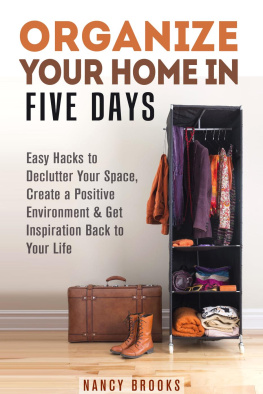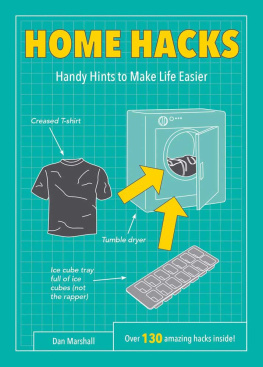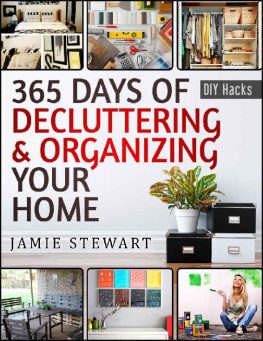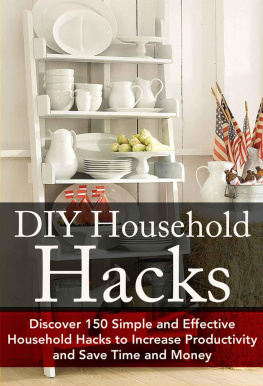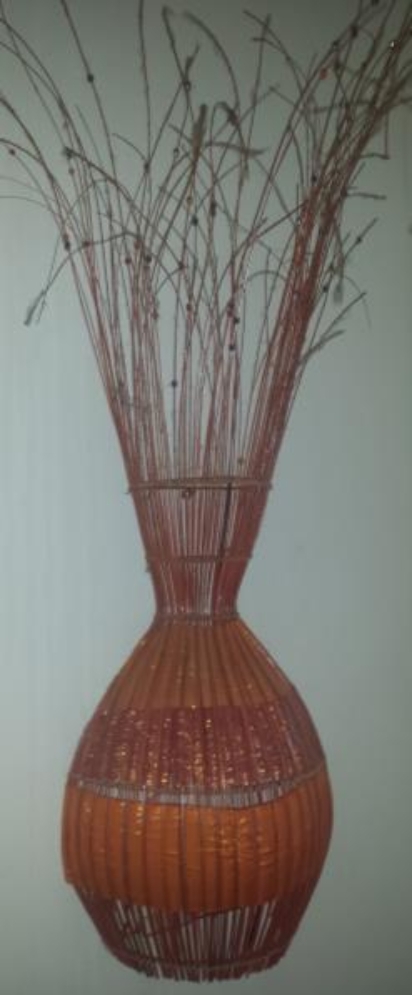DIY Household Hacks
Discover proven household hacks to increase your productivity, save your time and money
Copyrights 2015 by Nichole Brandon
All rights reserved. No part of this publications may be reproduced, stored in a retrieval system, or transmitted, in any form or by any means, electronic, mechanical, photocopying recording or otherwise without the prior written permission of the author and the publisher
Introduction
I want to thank you for downloading the book, DIY Household Hacks .
This book contains proven steps and strategies on how to use our proven household hacks to increase your productivity, save your time and money.
This book start with some basic information on getting you started and will guide you through many shortcuts, tips and tricks to help you turn your house into a home. We start at the basics around planning and getting your DIY project off the ground. Follow the chapters as we take you through each room of the house and implement these hacks to make your life a lot easier.
You can only be productive if your surroundings are sorted and clutter-free, Our chapter on hacks around the office will help you in your place of work as well whether at an employer or home office. Most of the hacks in this book are interchangeable, meaning that some of the hacks under the kitchen heading will work in other parts of the house too. So make sure you read through the entire book.
It is time to dust off you toolbox, grab your clipboard and start planning the improvements to satisfy your family and wow your friends.
Thanks again for downloading this book, I hope you enjoy it!
Table of Contents
Introduction
Chapter 1 Before you start
Chapter 2 Living room hacks
Chapter 3 Bedroom Hacks
Chapter 4 Kitchen Hacks
Chapter 5 Closet and Laundry hacks
Chapter 6 Office Hacks
Chapter 7 Household hacks to increase productivity
Chapter 6 How to organize your home without going insane
Conclusion
Chapter 1 What to do before you start
Every DIY job, whether it is big or small, must start with a plan. This might seem a waste of time if you are going to hang a few pictures in the lounge, but even a list of the 5 items that you need to complete the job is in essence a plan. For larger undertakings, like renovating a room definitely needs a plan the more detailed, the better.
A plan is essential because:
It saves time If you have all the tools and material ready, you do not need to run around finding things.
It saves money By proper planning, you can estimate the quantity of materials that you need more accurately. You can also budget better for the entire project.
You need to plan resources Most small DIY jobs around the house can be managed by one person, but on larger projects you might need a hand. Help may come from a spouse, kids, friends or family. In some cases you need to plan for experts to be on site for example plumbers or electricians. By following your plan, they will be at the site on the right day, at the right time.
It helps you manage the project It is very easy to forget a small detail. Without a proper plan you might find yourself on extra trips to the hardware store or to the lumber yard. It also helps you organize your resources to be at the right place, at the right time.
Things invariably change as a project unfolds, it is therefore important to keep your plan flexible. It will also help to keep a clipboard handy for your plan, sketches, notes, purchase slips and any other documentation on your project for easy reference. It saves a lot of time by not looking for things when you need them.
Hacks for planning.
Involve and inform everybody in your household about the project/s. This could mean extra hands to help you, or even better ideas as you get input from your loved ones.
If you have more than one project planned prioritize by Emergency (serious repairs that need immediate attention like smoke detectors or escape routes that are blocked); then by Security (locks, gates, alarm system etc.); then prioritize the rest by time available and resources.
Once a job is complete, remove the documentation from your clipboard and file in your project file. This will give you access to suppliers or contacts for specialists if you need them in the future.
In the following chapters we will explore each room in the house and give you some tips and hints on improving your living space. We urge you to read through all the hacks, as most of these can be used in any room in the house.
Chapter 2 Proven Living room hacks
As the name implies, a living room is a place for the family to share time together. Sometimes you watch a movie or a TV program, other times the room is used for board games or TV games. It is also a place for informal get-togethers with friends and family. So this is a versatile room and sees a lot of traffic.
Because of the diverse uses of this room it needs to be functional, properly spaced and have ample storage for everything that is needed in the room.
Quick hacks:
Remove the clutter. Get as much as possible off the floor to make cleaning fast and easy. Remember this room sees a lot of traffic.
Install castors or wheels to the coffee table, ottomans and pieces of furniture that you need to move around.
Install drawers or baskets into the coffee table to house items that you need every day for example remote controls, TV guides and coasters.
Install shelving for books, games, DVDs and other dust gathering items. Bonus points for installing doors to the shelves. Take time to sort the books and DVDs to find your favorites quickly! If guests arrive, close the doors and the room will be instantly neat.
Use baskets (in the coffee table or shelving) to group common things together. This could be a box of candles, platters for snacks, toys, extra batteries, globes, or even your knitting. Now you only need to take one container out and have everything ready for a specific function.
Instead of hanging a lot of pictures in frames, opt for very narrow floating shelves do display your photos. Use these to display other items as well.
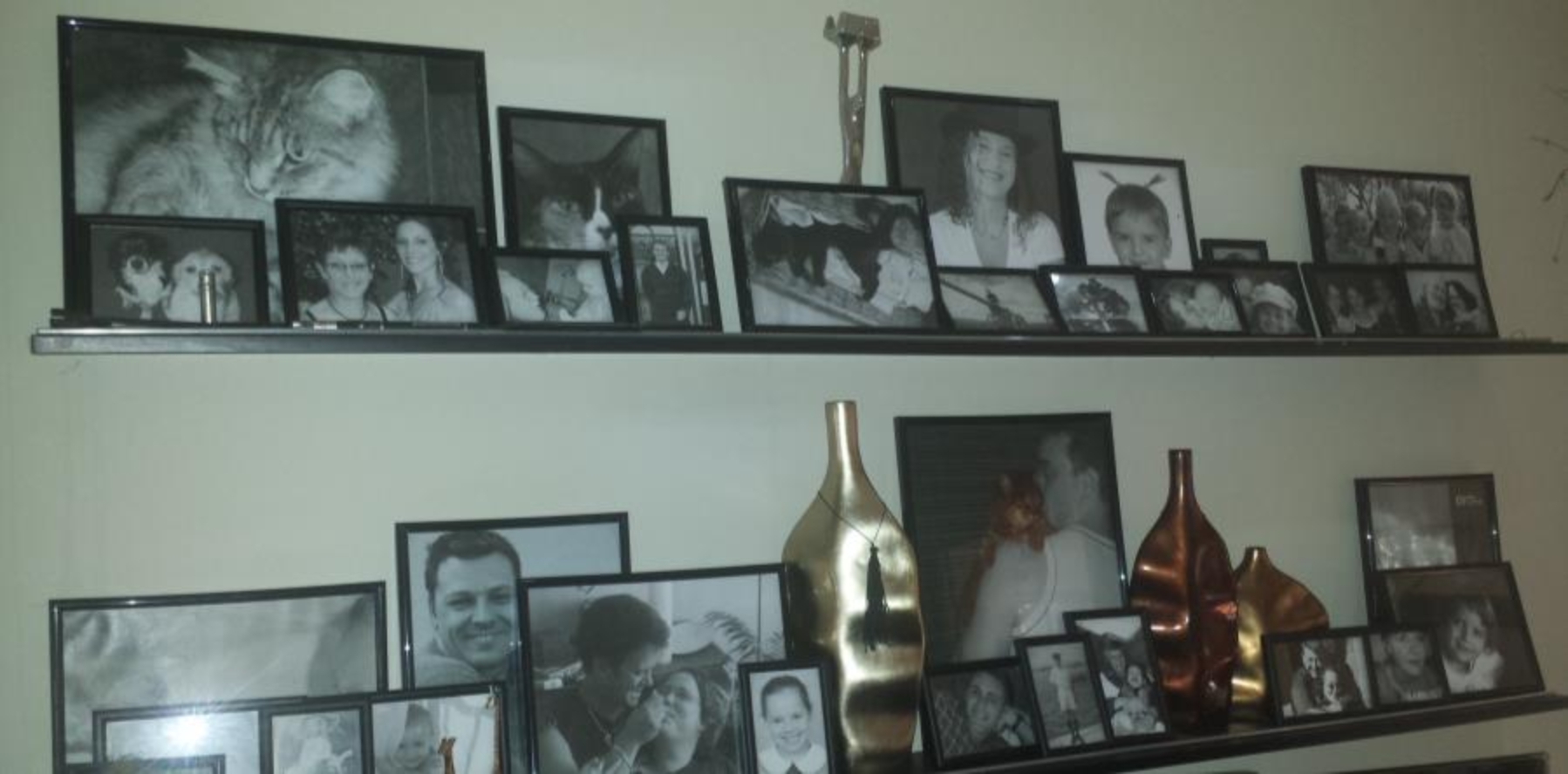
Use old crates (similar or various sizes) as wall mounted display shelves. To add extra depth to the room, install mirrors on the bottoms of the crates.
Lighting is very important in this room. Get rid of the single source of light in the center of the ceiling and install sets of low-voltage LED down-lighters. Wire them to switch them on in sets: Switch all of them on when hosting a get together, but only one set when you watch TV. Not only will you save money, but flush-mount down-lighters do not gather dust.
Use your wall space in a clever way. Install a large mirror on a wall to make the space look bigger. If you need extra light or lights that form part of the dcor, cut an interesting shaped lamp in two and wall mount for both light and dcor.
If you only use your TV occasionally, wall mount the unit and cover it with a framed picture that is hinged on one side. Neatly tie the cables together and hide them behind a vase, box or free-standing photo frame.







